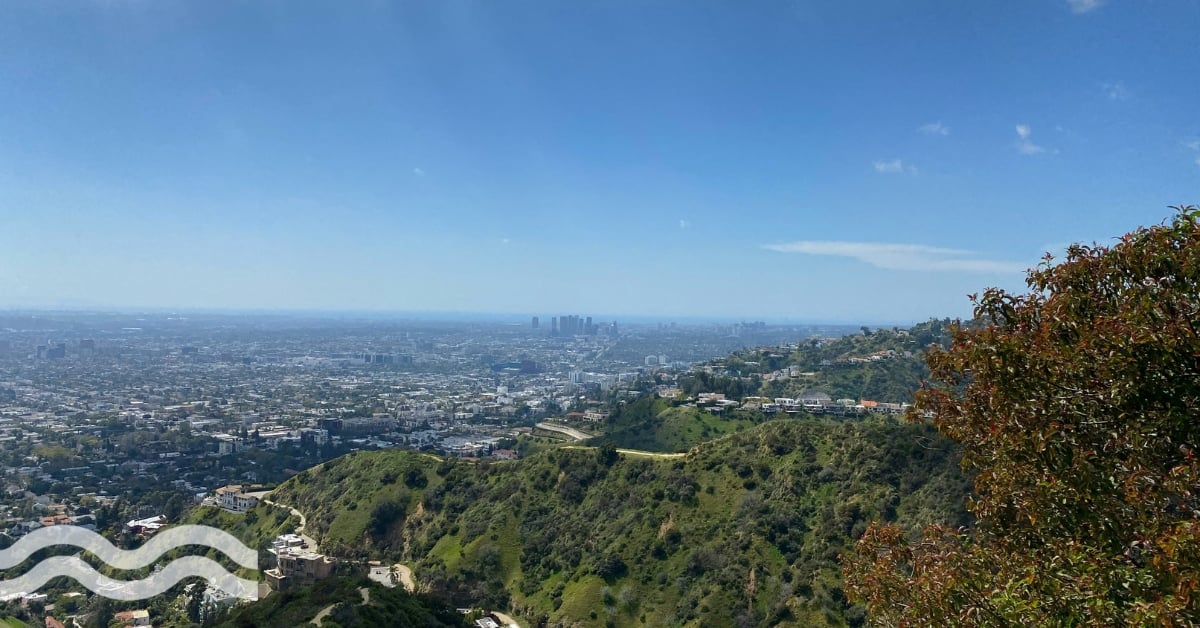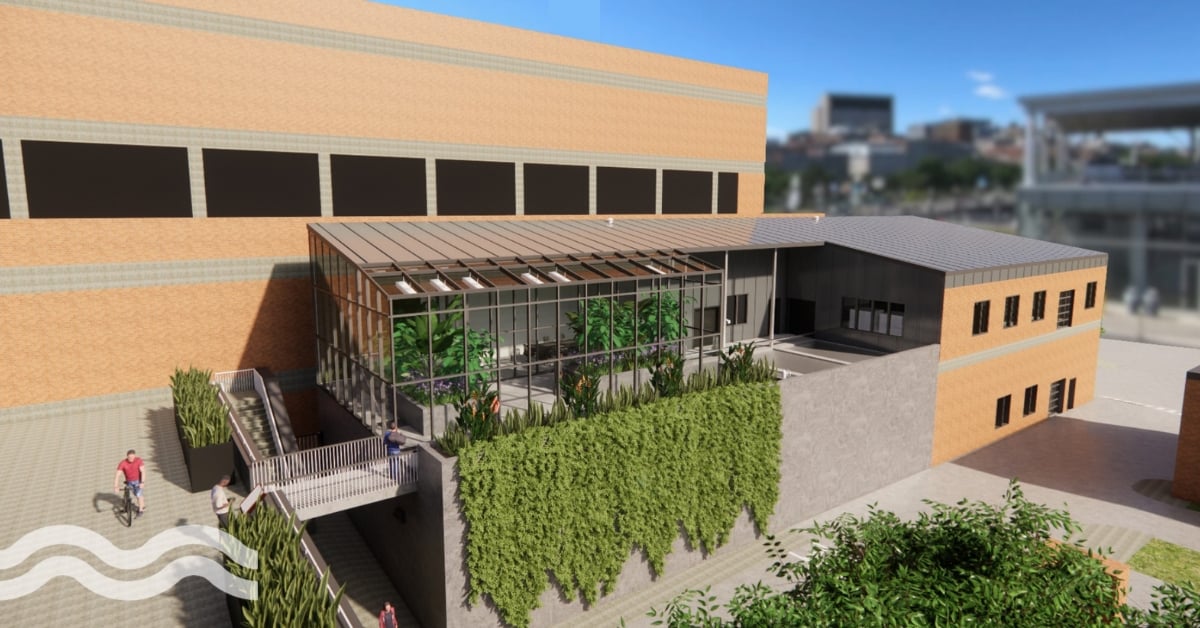Google: Water stewardship and sustainability goals
.jpg?h=400&iar=0&w=1140)
In its latest Environmental Report 2024, Google has recognised the need for improved water stewardship practices across its data centres, offices and supply chain. The report revealed that the growth of AI had led to a 17 per cent increase in its water footprint in 2023 compared to the previous year, driven largely by cooling demands of its data centres.
AI revolution driving Google water requirements
The processing power needed to cope with the rise of AI products and services contributed to a 17 per cent increase in Google's water footprint in 2023 compared to the year before. The total volume of water needed to cool its date centres was 6.1 billion gallons – a rise matched by increased electricity use.
The Environmental Report 2024 estimates that this is the same amount of water needed to irrigate 41 golf courses annually in the southwestern US.
Despite the increased water footprint, in its report, the company stats that it strives to 'build the world's most energy efficient computing infrastructure, supported by responsible water use practices and a commitment to minimizing waste'.
As befits a tech giant, the company is also using its products and services to help water stewardship projects around the world. For example:
- Google partnered to develop the Freshwater Ecosystems Explorer, a free, easy-to-use geospatial platform that provides national, sub-national, and basin-level data on freshwater ecosystems.
- In collaboration with OpenET, as well as government and academic research groups, the company supported the automation and scaling of evapotranspiration (ET) models to help improve water management.
- Global Water Watch, a new tool featuring near-real-time reservoir storage data, was supported by Google.org through its 2020 Google.org Impact Challenge on Climate.
How is Google tackling its water footprint?
In 2023, the company introduced its water risk footprint which was designed to 'further identify climate conscious cooling solutions that consider carbon-free energy availability, watershed health and future water needs'.
In attempting to address water usage, not only in its data centres and offices, but also in surrounding areas, Google is mirroring the sustainable frameworks in place at fellow tech giants Microsoft and Apple.
The Environment Report 2024 introduces its approach to sustainable practices and outlines targets to measure progress against. The report separates actions between Products and Operations, with water stewardship sitting under the latter section alongside three other environmental challenges: Net Zero; Circular economy, and Nature & Biodiversity.
![]()
Headline statistics
Despite the company's increased water footprint, the report highlights a number of water stewardship improvements.
- Water stewardship projects replenished an estimated 1 billion gallons (approximately 3.9 billion litres) of water in 2023, which represents 18 per cent of its 2023 freshwater consumption.
- This tripled the company's replenishment progress of 6 per cent achieved in 2022.
- There were 74 water stewardship projects in 2023 across 46 watersheds, almost double the 38 projects operating in 2022.
- Currently, 69 per cent of freshwater withdrawals came from watersheds with low water scarcity, 16 per cent came from watersheds with medium water scarcity, and 15 per cent came from watersheds with high water scarcity.
The company has set a bold target of replenishing 120 per cent of the freshwater volume that it consumes 'on average, across our offices and data centres by 2030, and help restore and improve the quality of water and health of ecosystems in the communities where we operate'.
By 2023 it had a long way to go to meet its ambitious targets, with the figure currently standing at 18 per cent. However, the company looks to be on the right road, receiving Water Efficiency Award from PUB, Singapore's National Water Agency, which recognizes the top water efficiency performers in their respective sectors.
Google's water stewardship standards
The company's overarching aim is to 'replenish more water than we consume and help improve water quality and ecosystem health in the communities where we operate'. This includes working collaboratively with communities and suppliers to 'replenish our freshwater consumption and improve watershed health while supporting ecosystems and water-stressed communities'.
To do this, the company's water stewardship strategy promotes responsible water resource management across its offices, data centres, and supply chain. It also states its aim to share technology and tools that 'enable everyone to predict, prevent, and recover from water stress'.
With offices in nearly 60 countries, Google is developing responsible water use practices for every region to help manage its global environment footprint. This will include all forms of water use, including cooking, cleaning, irrigation and cooling. New buildings will comply with sustainable design standards and leading third-party certifications, including water meters with automated leak detection being fitted. Outdate fixtures will be replaced by water-efficient alternatives.
Stewardship is already in evidence in many of the company's offices. For example, the Bay View office in Mountain View, California, has a treatment system designed to capture and reuse water on-site via stormwater retention ponds and constructed wetlands. A central plant treats stormwater gathered from retention ponds and wastewater collected from buildings, producing recycled water that can be used for cooling towers and irrigation.
Stormwater capture and recycled water is also used for non-potable purposes at the Gradient Canopy building in Mountain View, California, and the YouTube offices in San Bruno, where municipal water use is expected to fall by 18 per cent.
In the wider environment, the company partners with the Colorado River Indian Tribes (CRIT) and N-Drip in Arizona to fund conversion of flood irrigation to precision drip irrigation, and to support farmers to enable water-saving crop rotations, as well as partnering with the Quechan Tribe on a farmland initiative whose water savings will bolster efforts to improve water security in the Colorado River Basin. Other projects include stormwater basin partnerships, rainwater collection, supporting regenerative agriculture, lake restoration, forest management, improving wetland habitats, and more.

Why are cooling centres vast consumers of water?
Water cooling is important for regulating temperature inside a data centre. Overheating servers break down, impacting the services a modern world relies upon. In its Environment Report 2024, Google states that 'cooling has been shown to help reduce energy water consumption and related carbon emissions when compared to air-based cooling. While it will take more time for electricity grids to decarbonize, we'll continue using water cooling to improve our energy efficiency in certain geographies'.
So, water cooled data centres are here to stay, for a while at least. Google recognises that the trade-off has increased its water footprint and has made responsible water use and water replenishment at new sites a priority from the outset. It also states that water reuse practices are being accelerated across existing offices and data centres, and that it is 'tailoring site-specific solutions based on facility types, locations, and local water contexts. We also use non-potable sources and freshwater alternatives whenever feasible' – such as such as reclaimed wastewater, industrial water, seawater, or even air cooling.
Risk assessments are then conducted every three to five years to determine how well the strategy is working, alongside annual enterprise-wide checks. The framework has informed recent data centre developments where air-cooling is being used as an alternative to water because 'the source watersheds didn't meet our responsible use threshold for water cooling'. These include sites at Mesa, Arizona, and Canelones, Uruguay, and join other centres, such as the one in Dublin, Ireland, that use air instead of water for cooling.
Wider water strategies
The Environment Report 2024 also highlights other water-based initiatives.
Satellite data combined with machine learning is also used to help Global Fishing Watch monitor the ocean's ecosystems. Another ocean-based project, Tidal, was chosen as one of Time Magazine's Best Inventions of 2023, uses AI to monitor underwater ecosystems.
Habitat restoration and flood control were both introduced near the company's Sunnyvale, California campus. The project restored 4.3 acres of aquatic, wetland, and riparian habitat, which will benefit local and migratory water birds.
In Hamina, Finland, the company turned a disused paper mill into a data centre while repurposing the existing electrical substation. A seawater cooling tunnel is used to cool the data centre, reducing the need for other sources of water.
A new campus being built at the site of the company's first data centre in The Dalles, Oregon, provides a good example of how Google is viewing water use across more than just its data centres or offices. An Aquifer Storage and Recovery (ASR) system will pump excess surface water during the 'rainy season' into an existing aquifer for treatment and use during drier months, which the company likens to an underground 'savings account'.
This surplus water would normally become unusable run-off but will now become a vital source of water in the drier summer months, reducing the need to use freshwater and groundwater from local streams and rivers.
Water risk assessment
Google carries out an annual water risk assessment based on a combination of available risk assessment tools, including WRI Aqueduct Water Risk Atlas 3.0 and WWF Water Risk Filter 6.0, and other metrics. The assessment looks at risks related to scarcity, flooding, water quality, sanitation and hygiene, reputation, and regulatory stressors, identifying opportunities to improve water stewardship strategies.
In 2023, a water risk assessment was introduced for the company's data centres. This evaluates the health of the local water community's watershed and the impact of using locally available water for cooling. The data-driven analysis can also be used when choosing new sites for data centres and identifying potential ongoing risks.
Risk is also assessed in the supply chain using WRI's Aqueduct Water Risk Atlas, WWF's Water Risk Filter, and WULCA AWARE. The key risks identified include baseline water stress, flood risk, access to safe drinking water, and the level of sanitation and hygiene services. Regular audits are conducted at supplier sites to ensure compliance with the company's code of conduct.
Alternative sources of water
Reclaimed water made up 22 per cent of Google's data centre cooling volume in 2023. For example, reclaimed water was used at data centres in Singapore and in Douglas County, Georgia, which avoided the wastewater from being discharged into the local Chattahoochee River.
Other data centres in St. Ghislain, Belgium, Changhua County, Taiwan, and Eemshaven, Netherlands, use industrial water.
Related content
- Apple puts water replenishment at heart of global strategy
- Microsoft progress report
- Google-funded Global Water Watch platform provides real-time insight on freshwater
- Google-backed tool to open up data on water reuse potential across MENA
- New water stewardship standards: sharpening the mind or creating fatigue?


